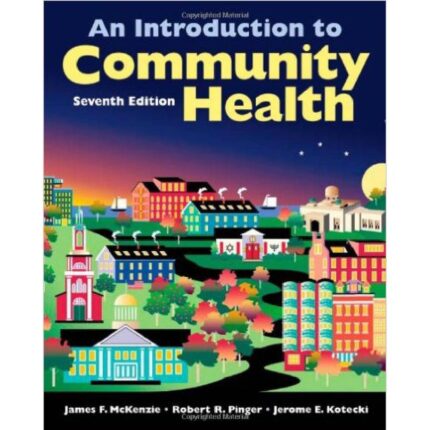Questions And Answers A Guide To Fitness 4th Edition By Gary Liguori – Test Bank
Multiple Choice Questions
1. Coronary artery disease is characterized by
A. inhibited blood flow in the arteries.
B. abnormal heart rhythms.
C. sudden temporary cessation of the heartbeat.
D. interruption of the blood and oxygen supply to the brain.
Answer: A
Page: 377
Section: Cardiovascular Disease
Topic: Coronary Artery Disease
Topic: Cardiovascular Disease
Learning Objective: Identify the major types of cardiovascular disease.
Bloom’s: Remember
2. Which of the following defines arteriosclerosis?
A. a general hardening of or loss of elasticity in the arteries
B. a buildup of fats, cholesterol, and other cellular waste products
C. a blocked blood supply
D. chest pain typically resulting from reduced blood supply to the heart
Answer: A
Page: 377
Section: Cardiovascular Disease
Topic: Atherosclerosis
Topic: Cardiovascular Disease
Learning Objective: Identify the major types of cardiovascular disease.
Bloom’s: Remember
3. Angina pectoris is
A. a general hardening of or loss of elasticity in the arteries.
B. a buildup of fats, cholesterol, and other cellular waste products.
C. a blocked blood supply.
D. chest pain typically resulting from reduced blood supply to the heart.
Answer: D
Page: 378
Section: Cardiovascular Disease
Topic: Coronary Artery Disease
Topic: Cardiovascular Disease
Learning Objective: Identify the major types of cardiovascular disease.
Bloom’s: Remember
4. Which form of cardiovascular disease causes the most deaths in America each year?
A. stroke
B. coronary artery disease
C. heart failure
D. arteriosclerosis
Answer: B
Page: 377
Section: Cardiovascular Disease
Topic: Coronary Artery Disease
Topic: Cardiovascular Disease
Learning Objective: Identify the major types of cardiovascular disease.
Bloom’s: Remember
5. A change in the normal pattern of the heartbeat is called
A. angina pectoris.
B. distress.
C. heart attack.
D. arrhythmia.
Answer: D
Page: 378
Section: Cardiovascular Disease
Topic: Coronary Artery Disease
Topic: Cardiovascular Disease
Learning Objective: Identify the major types of cardiovascular disease.
Bloom’s: Remember
6. A sudden loss of responsiveness, pulse, and blood pressure is known as
A. heart attack.
B. arrhythmia.
C. cardiac arrest.
D. angina pectoris.
Answer: C
Page: 378
Section: Cardiovascular Disease
Topic: Coronary Artery Disease
Topic: Cardiovascular Disease
Learning Objective: Identify the major types of cardiovascular disease.
Bloom’s: Remember
7. Which condition is usually fatal unless immediately treated with CPR or an electrical shock to the heart?
A. heart attack
B. arrhythmia
C. cardiac arrest
D. angina pectoris
Answer: C
Page: 378
Section: Cardiovascular Disease
Topic: Coronary Artery Disease
Topic: Cardiovascular Disease
Learning Objective: Identify the major types of cardiovascular disease.
Bloom’s: Remember
8. In which condition does the heart usually keep beating, but the blood supply to it is blocked?
A. heart attack
B. arrhythmia
C. cardiac arrest
D. angina pectoris
Answer: A
Page: 378
Section: Cardiovascular Disease
Topic: Heart Attack
Topic: Cardiovascular Disease
Learning Objective: Identify the major types of cardiovascular disease.
Bloom’s: Remember
9. Which of the following diseases is the number-three cause of death in America and a leading cause of serious disability?
A. stroke
B. hypertension
C. heart failure
D. cancer
Answer: A
Page: 378
Section: Cardiovascular Disease
Topic: Stroke
Topic: Cardiovascular Disease
Learning Objective: Identify the major types of cardiovascular disease.
Bloom’s: Remember
10. Another name for a “mini-stroke” is
A. ischemic stroke.
B. hemorrhagic stroke.
C. transient ischemic attack.
D. hypertension.
Answer: C
Page: 379
Section: Cardiovascular Disease
Topic: Stroke
Topic: Cardiovascular Disease
Learning Objective: Identify the major types of cardiovascular disease.
Bloom’s: Remember













Reviews
There are no reviews yet.